Card Proofs of the
19th Century
By Greg Waldecker
Presented to the
Tidewater Virginia Stamp Club
February 10, 2015

1893 Issue
The Columbian Exposition Issue
American Bank Note Company (ABNC)
According to a report of the Third Assistant Postmaster General, of November 20, 1892, the USPOD decided
“…to issue, during the progress of the Columbian Exposition at Chicago, a special series of adhesive postage stamps of such a character as would help to signalize the four hundredth anniversary of the discovery of America by Columbus…it was consistent with the idea of a display at the Exposition of such articles as would illustrate the history, progress and administrative functioning of the Post-Office Department, which Congress, by statute, as directed to be made part of a general governmental exhibit…” 43
This same report goes on to explain benefits to the USPOD and the country:
“The benefits to accrue to the Exposition from the issue of such a series of stamps, by constantly drawing to it public attention, at home and abroad, are too patent to need elaboration.” 44
In the report of the Postmaster General for 1892, he explains another benefit which will be derived from this new issue of stamps:
“In addition, the ‘mania,’ as it is called, for collecting postage stamps, as specimens, is universal throughout the world….the value of postage stamps in private collections which will never be drawn upon to pay postage may safely be placed at many millions of dollars. The beauty and unique character of the new Columbian stamps will cause their sale in large quantities, simply for use in collections; and not only will they be purchased in single and partial sets by collectors, but in view of the limited time in which they will be issued, they will be accumulated in great quantities by dealers and others to meet future demands…” 45
It is this line of thinking which can be extrapolated to give collectors today an understanding of why the card proofs were created in the first place.
This will be the last series of stamps printed by an outside contractor for the USPOD. The remaining issue, and all others until the Overrun Countries issues, will be printed by the Bureau of Engraving and printing (BEP).
The following information is germane to this series:
| Scott Number | Denomination | Color |
|---|---|---|
| 230P4 | One cent | Deep Blue |
| 231P4 | Two cent | Brown Violet |
| 232P4 | Three cents | Green |
| 233P4 | Four cents | Ultramarine |
| 234P4 | Five cents | Chocolate |
| 235P4 | Six cents | Purple |
| 236P4 | Eight cents | Magenta |
| 237P4 | Ten cents | Gray Black |
| 238P4 | Fifteen cents | Dark Green |
| 239P4 | Thirty cents | Orange Brown |
| 240P4 | Fifty cents | Slate |
| 241P4 | One Dollar | Salmon |
| 242P4 | Two Dollars | Brown Red |
| 243P4 | Three Dollars | Yellow Green |
| 244P4 | Four Dollars | Crimson Lake |
| 245P4 | Five Dollars | Black |
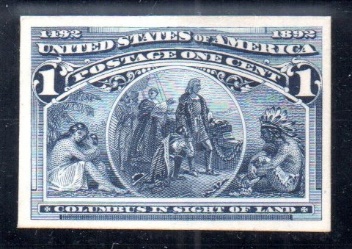
Scott 230P4
Deep Blue
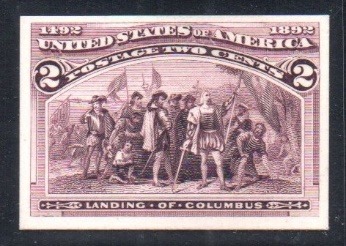
Scott 231P4
Brown Violet
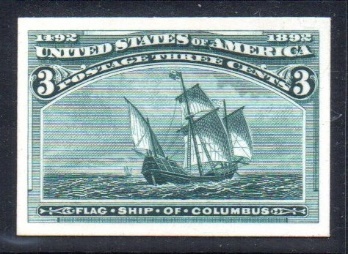
Scott 232P4
Green
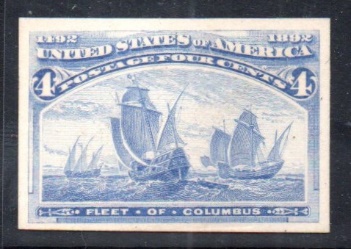
Scott 233P4
Ultramarine
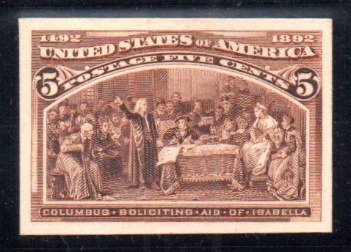
Scott 234P4
Chocolate
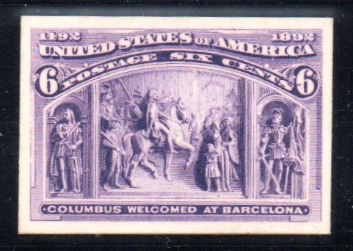
Scott 235P4
Purple
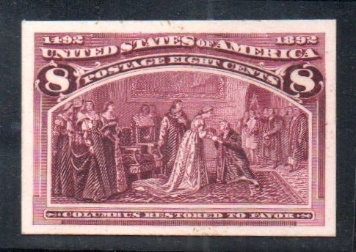
Scott 236P4
Magenta
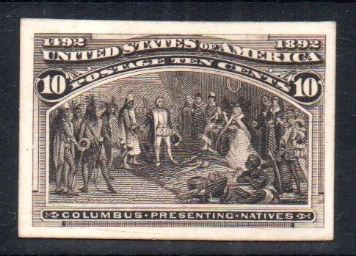
Scott 237P4
Gray Black
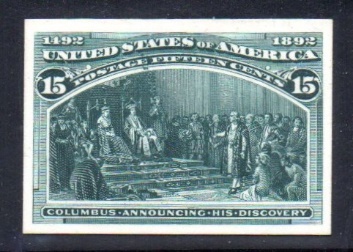
Scott 238P4
Dark Green
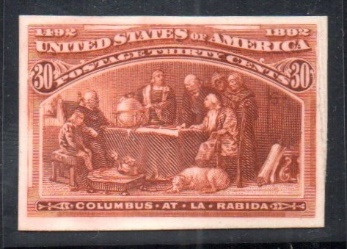
Scott 239P4
Orange Brown
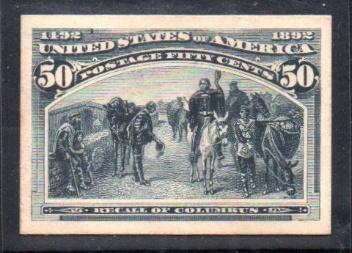
Scott 240P4
Slate
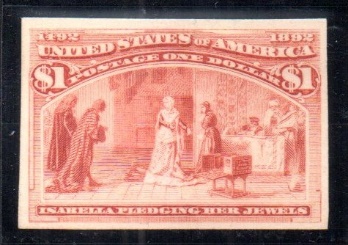
Scott 241P4
Salmon
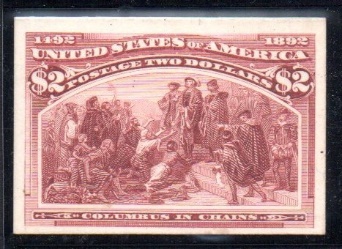
Scott 242P4
Brown Red
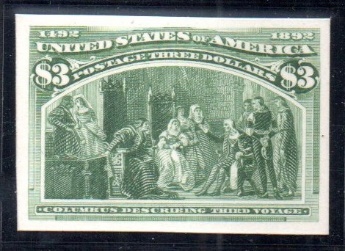
Scott 243P4
Yellow Green
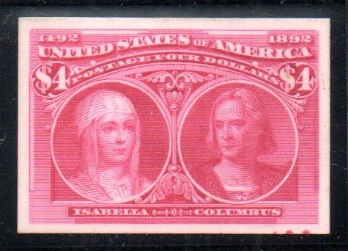
Scott 244P4
Crimson Lake
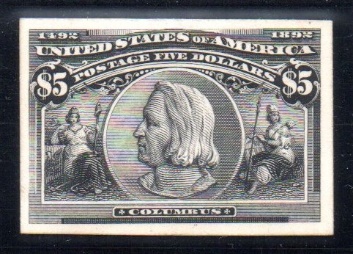
Scott 245P4
Black
Bureau of Engraving and Printing
1894
As had been the custom in the past, the USPOD placed advertisements for the contract to print stamps for the government on October 16, 1893. Three bids were received, from the same firms or individuals who had previously bid. After making known the bid amounts, the USPOD was approached by the Bureau of Engraving and Printing, which prepared all other securities for the U.S. government – including the revenue stamps – and offered a bid which was substantially lower than any other. Given the consideration that this was a governmental agency, that it was located in Washington, D.C. and that the bid presented substantial savings, the contract was awarded to the BEP.46
Prior to the BEP taking control of the production of stamps, all card proofs had been created by the American Bank Note Company, from dies in their possession. As a security measure and an expedient, the dies from the ABNC were turned over to the BEP where they were modified by placing the triangles in the top corners of the design.
The only card proofs of this issue were done by the BEP in 1895, so the need to measure card thickness is not at issue with these. The new stamps were not printed in their entirety, but only five of the values were produced. As this is the last instance of card proofs being prepared for issue and sale to the general public, no other subsequent stamps were produced routinely on card stock. 47
The following information is germane to this series:
| Scott Number | Denomination | Color |
|---|---|---|
| 247P4 | One cent | Blue |
| 248P4 | Two cent | Pink |
| 232P4 | Six cents | Brown |
| 262P4 | Two Dollars | Dark Blue |
| 263P4 | Five Dollars | Dark Green |
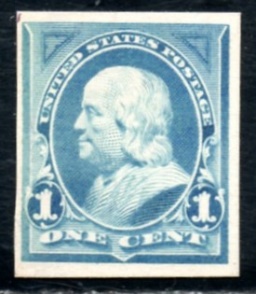
Scott 247P4
Blue
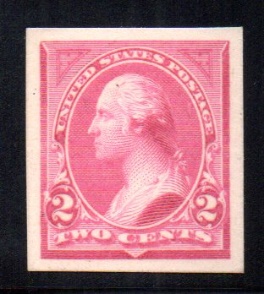
Scott 248P4
Pink
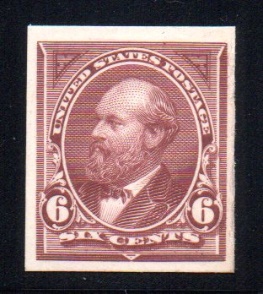
Scott 232P4
Brown
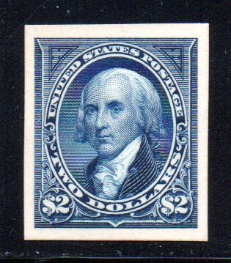
Scott 262P4
Dark Blue

Scott 263P4
Dark Green
43 Luff, p. 128.
44 Ibid.
45 Ibid.
46 Luff, p. 136. The information comes from the October 31, 1894 report of the Third Assistant Postmaster General and is quoted verbatim by Luff.
47 Snee, p. 760.





